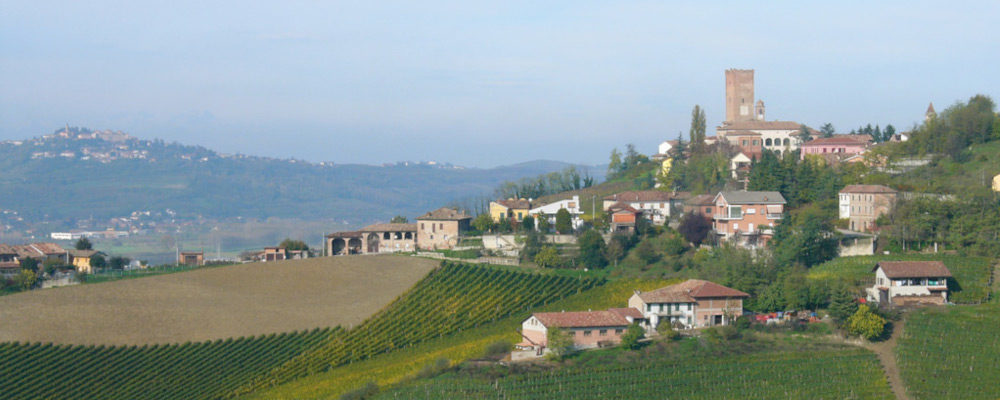Last week Zach Geballe, a Seattle-based wine writer and educator, published a small rant at the American wine search engine site, pix.vines.
Geballe’s piece had the full title The Single-Vineyard Wine Scam: Wine lovers’ obsession with terroir gives winemakers a get-out-of-jail-free card and it provoked no small amount of controversy on wine Twitter. The French-invented concept of terroir refers to the environment in which the grape vines that make a particular wine are grown, including factors like soil type, climate, altitude and position relative to the sun (south facing, etc.).
Geballe’s piece is a fun read, not least because he zeros in on an increasing practice among wine marketers who use the concept of terroir to either excuse wine that is, at worst, not very well made or, at best, not very interesting. At the beginning of this century, terroir was an exciting concept among a new generation of winemakers and wine trade that wished to fight against the homogenization of winemaking style around the world.
The spirit of those times was caught in Jonathan Nossiter’s documentary Mondo Vino and the Alexander Payne film Sideways, both of which were released in 2004. Nearly twenty years later the term is getting tired.
I enjoyed Geballe’s piece so much I asked him to join me this week in a Zoom conversation, which he did. He cheerfully explained that the essay came from his frustration with a growing occupation with where a wine comes from over how it was made or even tastes.
He said, “I felt like that we, as a wine industry, are at a precarious place where people have lost sight of wine’s central purpose, and it’s not to explore tiny plots of geography in a glass.” Geballe wants to know what happened to the descriptions of the people that make the wine, or praise of the fine art of blending.
In his piece, and in our conversation, Geballe goes further in his interrogation of terroir, pointing out to me in a tone of frustration, “agriculture is also a human endeavour.” Indeed, the history of wine is the history of human intervention, and every glass of wine is the result of a long and complicated flowchart of decisions, beginning with how the vines were planted and trained to what vessel the wine was made in to how long it was aged in the bottle before it was shipped to the store at which it was bought. Geballe’s piece resonated because a lot of wine people agree that actual wine making deserves credit again.
One kind of wine that usually isn’t too precious about terroir, and is never about a single vineyard, are the ones made by co-operatives. Co-operative wineries, which are owned collectively by wine growers, by definition source their grapes from many vineyards and their wine making teams must blend and intervene and generally work on the wines to create a consistent product. Co-operatives still make a large amount of wine in Europe, South America, and South Africa, though much of it is kept for domestic production.
Co-operatives, especially in Europe, are having a bit of a renaissance and making some very good wines at very good prices. This is a bit of a secret. The co-operatives from very famous wine regions, like the Produttori del Barbaresco or the Kellerei Bozen – Cantina Bolzano, take the name of their location and more or less advertise their collectivity. But many co-operatives obscure the nature of their corporate composition on the fear that the wine buying public might judge their product to be inferior to those made by aristocrats in a Château or a small salt of the earth family winery.
That fear is not unfounded. The trend through the late twentieth century, especially in Western European wine regions, was for wine growers to pivot from selling their grapes to the local co-operative to making it themselves “on the estate.”
Co-operatives, especially in Europe, are having a bit of a renaissance and making some very good wines at very good prices.
Co-operatives have the advantage of guaranteeing to buy all of a farm’s grapes at a set amount and began in France in the 1930s as an answer to the deprivations of the Great Depression. But that security meant that the income from the grapes would be lower than income drawn from vertically integrating and selling wine made from the grapes.
Many wine making families also turned towards making their own wine due to the increasing professionalization of wine in general. Agricultural colleges gave younger farmers the opportunity to study viticulture and vinicultural and the tools to break away from the co-operatives. And by integrating all aspects of the wine production to the family estate, that professionalization provided employment to many members of the family from multiple generations. A winery could have a vineyard manager, a cellar manager, an export and sales manager, and so on.
The wine world is cyclical, and what comes out of fashion eventually comes back, if in a somewhat different form. This can be hard to discern at a glance because things work slowly from vintage to vintage, so it can take many years for a stylistic change, like less oaky wines or the usefulness of the term terroir, to manifest. In this way, the professionalization of wine production turned out to be of great use to the co-operative in the long run and is largely behind their reinvigoration.
As the agricultural colleges graduated professional winemakers, not all of them had family farms to return to. And the farmers who continued to sell grapes to the co-operatives were also professionalizing and seeing the need to upgrade the co-operative wines. So was born the new co-operative that emphasizes quality over quantity, overseen by professional wine making teams under the ownership and control of professional farmers.
The good news for consumers is that even though the quality of the co-operative wines has greatly improved in the last 20 years to be competitive with the privately held producers, the prices have not. The co-operatives still extend buying guarantees to their grape growers, and so still need to make a set amount of wine that needs to be sold every year to make way for the new vintage. Also, notwithstanding the examples above, the remaining co-operatives tend to be situated in up and coming regions that are competitively priced.
Next time you find a wine you like for around $20, do a Google search and don’t be surprised if it turns out to be made at a co-operative.
Here is a list, which is by no means complete, of some co-operatives making some very good wines at good prices:
Bodegas Eidosela: https://www.bodegaseidosela.com/
Cantina Bolzano: https://www.kellereibozen.com/en/
Cantine Settisoli: https://cantinesettesoli.it/en
Cave de Tain: https://www.cavedetain.com/en/
Domäne Wachau: https://www.domaene-wachau.at/en/
La Guardiense: https://www.laguardiense.it/
Mezzacorona: https://www.mezzacorona.it/en-us
Produttori del Barbaresco: http://www.produttoridelbarbaresco.com/index.php?lang=en
Vignerons de Buxy: https://www.vigneronsdebuxy.fr/?lang=en
Vignerons Castelas: https://www.vignerons-castelas.fr/




